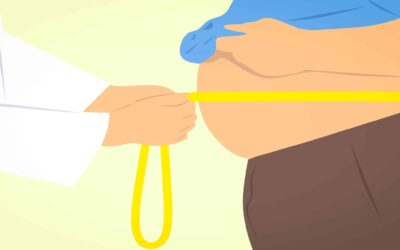Losing weight has always been the talk of the town and a challenge to many, in particular, losing face fat has been a frustrating issue.
If you are looking for effective tips to get rid of your fuller-looking face, then you are certainly at the right place. This article provides you with every minute details about face fat and ways of managing it backed by scientific evidence.
It’s time to exert efforts for some lifestyle changes, so that the next time you won’t have to bother about fixing great camera angles anymore!
TYPES OF FACE FAT
Facial puffiness can be of various types depending on whether it’s related to any underlying disease or if it’s just a regular fat deposit accumulation around the area. The following explains two most common types of facial fat:
Double Chin
Double chin refers to the formation of fat underneath your chin. It is also called submental fat and it is most commonly caused by excessive weight. However, sometimes genetics or elastic skin may also be the cause of a double chin.
Moon Face
Moon face is usually caused either by the complication of certain diseases or as a side effect of steroid intake. Fat deposition along the ends of the skull and all around the face results in a puffy appearance of the face where the visibility of the ears is very minimal. This leads to a complete rounder appearance of the face which is more often in medical terminology treated as “moon face”.
CAUSES OF FACE FAT
The leading cause of facial puffiness is usually obesity due to which fat starts accumulating around the face as well. However, there are certain pathological conditions due to which an individual develops facial swelling or puffiness. Below you will find a list of conditions which could also be the potential cause.
Cushing Syndrome
Cushing syndrome usually occurs in patients who are already diagnosed with some disease which require an intake of steroids. Especially in diseases like asthma and rheumatoid arthritis the patient gets exposed to excessive cortisol hormone production which leads to weight gain ultimately.
Depression

Facial fat also tends to occur in people with various depressive disorders. They generally eat more than usual but exercise less, which leads to fat accumulation around the face and body.
Hypothyroidism
Even though the cause of hypothyroidism is usually autoimmune, due to a lack of thyroid hormone production, it leads to weight gain which is among the major diagnostic signs and symptoms of hypothyroidism.
Arthritis
Inflammatory conditions such as arthritis lead to swollen joints and eventually decrease the daily walking ability of individuals, which can lead to massive weight gain.
Diabetes
Facial puffiness may also occur in patients suffering from diabetes. According a research study, the face is a vascular area which contains bundles of vascular supply accumulation of fat. Fat determines insulin sensitivity, which is a powerful predictor in diagnosing diabetes, however more research is required to determine correlation.
METHODS TO LOSE FACE FAT
There are various tips available for facial fat reduction, but the key to success is always patience and persistence, as it just doesn’t happen in a few days. Here we highlight various useful methods to ensure proper reduction of face fat.
1. Cardiovascular Training
Among different modes of weight loss training, the most effective is cardiovascular exercise because it is more targeted towards overall weight reduction, not just pinpointed towards face fat. Yet, overall weight loss does reflect on the face though.
Research done in 2012 measured the progress of two groups, one performing resistance training the other one aerobic training. The results revealed that the group with aerobic training shows better reduction in fat as compared to the group with resistance training.
It is important to perform cardio training according to the needs of the body. The intensity for each individual varies, although performing such workouts at a high-intensity at least three times a week leads to better weight reduction and fat loss.
Another randomized controlled trail conducted in 2015 on postmenopausal women, in which the participant was advised to perform workout of various intensities. Women who performed 300 minutes a week for weight loss training results in more fat loss than women who performed only 150 minutes of training per week.
2. Face and Mouth Workout
There are different methods to reduce face fat, among them are different modalities which may help in reducing facial puffiness.
Warm Up
Involves clockwise rotations of the head and opened jaw. Such movement helps in initial stretching from a static position.
Whistle
A whistling position helps in contracting the muscles of the neck, doing this activity at least ten times a day can help the face and neck muscles and reduce fat ultimately.
Pout
Pout is a famous Instagram selfie position which you may repeat up to 15 times and it’s recommended to hold this position for around 20 seconds.
Stress Ball Squeeze
Squeezing a small stress ball by pushing the chin against the ball firmly for a few seconds and this act can be repeated up to 30 times a day.
Lion’s Yawn
Another effective method is opening the mouth wide open with the tongue protruded forward to maximize contraction of the face, neck and chin muscles for 10 seconds. It can be repeated more than 10 times a day.
Chewing Gum
Chewing gum is also useful in multiple ways especially in reducing a double chin due to its impact on the muscles of mastication, face, and jaw. However, it should not be done all the time.
According to one study published in the journal of appetite, it was concluded that chewing gum helps in weight loss and decreases cravings especially after the consumption of a meal.
Face workouts can be extremely beneficial in fighting against aging and keeping muscles healthy and active. A study conducted on associating face exercise with the general appearance of aging revealed that doing such exercises for at least 20 weeks can improve face fullness and decrease the hypertrophy of face muscles.
3. Avoid Alcohol
Over the years, alcohol consumption has never been linked to healthy habits. It can lead to fat accumulation around the face and also bloating due to its low nutrient values and high calories ingredients. This tends to result in massive weight gain.
Such data is backed by scientific research done in 2015, which also concluded that alcohol consumption makes the individual vulnerable to weight gain and it is considered as a risk factor for obesity.
Also, according to U.S Guidelines, moderate drinking for men is considered as up to two glasses of alcohol in a day and one glass a day for women.
4. Better Sleep Pattern

Without a shadow of a doubt, among various treatments, the easiest of all is certainly having a better sleep cycle. Getting adequate amounts of sleep is beneficial for our health, especially for a hormone called leptin, which promotes fullness and another hormone known as ghrelin, which stimulates appetite.
According to a research done in 2015 on the effect of sleep deprivation on serum cortisol levels. Result shows that sleep deprivation causes an increase in serum cortisol levels, which may lead to weight gain and mental disorders.
It’s important that we don’t alter our sleep pattern every now and then and stick to a regular nighttime sleeping pattern of at least 7 to 8 hours a day in adults.
According to research, people with better sleep patterns performed better in weight loss training as compared to the group of obese adults with almost no weight loss training.
5. Reduce Sodium Intake
One of the major causes of facial puffiness is an accumulation of fluid. It usually occurs due to excess sodium in the body, this leads to fluid retention. Therefore, reducing sodium intake can tremendously improve facial puffiness.
According to scientific evidence, diets rich in sodium such as processed foods and meat products, which contain more than 70% of sodium can lead to fluid retention. Skipping such food can help our face look slim, glowing and youthful.
A better way to keep fluid balance is by drinking at least 7-8 glasses of water per day which will help consume less calories and promote weight loss. According to one review done in 2016, excessive water consumption helps in breaking down fat stores and converts them into fatty acid. It is then used for energy purposes by our body and most importantly using fat stores leads to a slimmer face and reduced weight.
6. Consume Fiber Diet
In order to lose face fat, it is important that we eat a healthy and generally high fiber diet. This is linked with losing facial fat and having a slimmer face appearance.
According to a study, products rich in fiber such as fruits, nuts, seeds, and vegetables keep the stomach full and decrease cravings due to their slow passage in our digestive tract.
A scientific peer-review conducted on eating water soluble fibers revealed that fiber mixed with any gel or water may also help in reduction of facial fat, waist diameter and overall body weight without even avoiding calorie intake.
KEY TAKEAWAYS
All in all, there are many methods we can apply in our daily life routine to easily get rid of facial fat without even going through any kind of cosmetic fat losing surgery such as mesotherapy and liposuction.
The most effective treatment is cardiovascular training as it impacts overall body fat, followed by a healthy diet such as a fibrous diet and drinking adequate amounts of water to ensure weight maintenance.
If you still feel like you are unable to follow the above methods or find them ineffective, consult your professional doctor to rule out possible causes of obesity.
Also, it is recommended to consult your physician or dietitian before opting for any major diet changes or moderate intensity exercises.
Article Sources
HealthxTips is committed to delivering content that adheres to highest standard for accuracy, sourcing and objective analysis.
HealthxTips uses only high-quality and trustworthy sources to support the facts in our articles.
1. Alam M, Walter AJ, Geisler A, et al. Association of Facial Exercise With the Appearance of Aging. JAMA Dermatol. 2018;154(3):365–367. doi:10.1001/jamadermatol.2017.5142
2. Centers for Disease Control and Prevention (CDC) (2012). Vital signs: food categories contributing the most to sodium consumption – United States, 2007-2008. MMWR. Morbidity and mortality weekly report, 61(5), 92–98.
3. Friedenreich, C. M., Neilson, H. K., O’Reilly, R., Duha, A., Yasui, Y., Morielli, A. R., Adams, S. C., & Courneya, K. S. (2015). Effects of a High vs Moderate Volume of Aerobic Exercise on Adiposity Outcomes in Postmenopausal Women: A Randomized Clinical Trial. JAMA oncology, 1(6), 766–776. https://doi.org/10.1001/jamaoncol.2015.2239
4. Hervik, A. K., & Svihus, B. (2019). The Role of Fiber in Energy Balance. Journal of nutrition and metabolism, 2019, 4983657. https://doi.org/10.1155/2019/4983657
5. Hetherington, M. M., & Regan, M. F. (2011). Effects of chewing gum on short-term appetite regulation in moderately restrained eaters. Appetite, 57(2), 475–482. https://doi.org/10.1016/j.appet.2011.06.008
6. Jovanovski, E., Mazhar, N., Komishon, A., Khayyat, R., Li, D., Blanco Mejia, S., Khan, T., L Jenkins, A., Smircic-Duvnjak, L., L Sievenpiper, J., & Vuksan, V. (2020). Can dietary viscous fiber affect body weight independently of an energy-restrictive diet? A systematic review and meta-analysis of randomized controlled trials. The American journal of clinical nutrition, 111(2), 471–485. https://doi.org/10.1093/ajcn/nqz292
7. Sierra-Johnson, J., & Johnson, B. D. (2004). Facial fat and its relationship to abdominal fat: a marker for insulin resistance?. Medical hypotheses, 63(5), 783–786. https://doi.org/10.1016/j.mehy.2004.06.020
8. Song, H. T., Sun, X. Y., Yang, T. S., Zhang, L. Y., Yang, J. L., & Bai, J. (2015). Effects of sleep deprivation on serum cortisol level and mental health in servicemen. International journal of psychophysiology : official journal of the International Organization of Psychophysiology, 96(3), 169–175. https://doi.org/10.1016/j.ijpsycho.2015.04.008
9. Ross, K. M., Graham Thomas, J., & Wing, R. R. (2016). Successful weight loss maintenance associated with morning chronotype and better sleep quality. Journal of behavioral medicine, 39(3), 465–471. https://doi.org/10.1007/s10865-015-9704-8
10. Thornton S. N. (2016). Increased Hydration Can Be Associated with Weight Loss. Frontiers in nutrition, 3, 18. https://doi.org/10.3389/fnut.2016.00018
11. Traversy, G., & Chaput, J. P. (2015). Alcohol Consumption and Obesity: An Update. Current obesity reports, 4(1), 122–130. https://doi.org/10.1007/s13679-014-0129-4
12. Willis, L. H., Slentz, C. A., Bateman, L. A., Shields, A. T., Piner, L. W., Bales, C. W., Houmard, J. A., & Kraus, W. E. (2012). Effects of aerobic and/or resistance training on body mass and fat mass in overweight or obese adults. Journal of applied physiology (Bethesda, Md. : 1985), 113(12), 1831–1837. https://doi.org/10.1152/japplphysiol.01370.2011








0 Comments